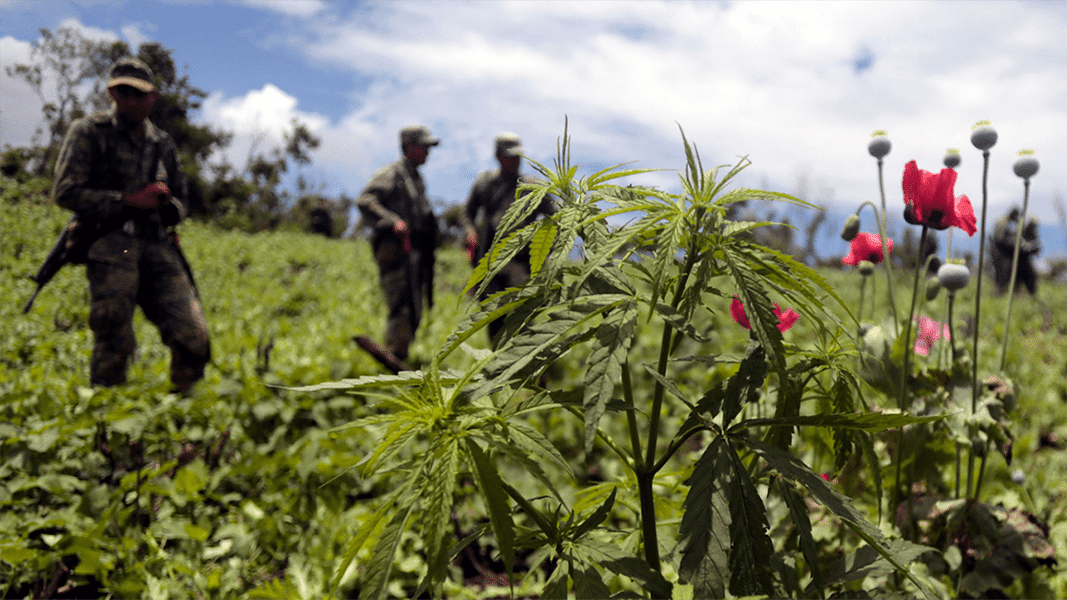With the voters in Washington and Colorado legalizing marijuana, Martin A. Lee argues that the war on cannabis may soon be over—and good riddance to decades of bad science, scare-mongering, and harsh laws.
Residents of Colorado and Washington made history on Election Day by voting to legalize the adult use of marijuana. For a country punch-drunk on decades of anti-marijuana hysteria, it felt like a momentary jolt of sobriety. It might even go down as a long-term game-changer. The passage of Amendment 64 in Colorado and Initiative 502 in Washington could herald the beginning of the end of marijuana prohibition nationwide.
From a historical perspective, marijuana prohibition is an aberration. For thousands of years men and women in many cultures have used cannabis as a curative and a source of fiber and oil. It wasn’t until well into the 20th century that U.S. legislators and their international counterparts imposed a global prohibitionist regime. How did this aberration come to pass and why has it persisted until now?
Concerned that his entire department was on the chopping block because of Depression-era budget cuts, Federal Bureau of Narcotics chief Harry Anslinger launched the Reefer Madness campaign to convince a clueless Congress and the American public that a terrible menace threatened the country, one that required a well-funded antinarcotics effort. Determined to criminalize the herb and build his bureaucratic fiefdom, Anslinger promoted all the hoary myths about marijuana-induced mayhem and sexual depravity—stories of pot-crazed ax murderers, playground pushers, sordid drug dens, and buxom reefer babes whose lives were ruined by smoking the devil’s weed with dark-skinned rogues.
In the world according to Anslinger, marijuana was a deadly, addictive drug that enslaved its users and turned them into violent, deranged freaks. He rang alarm bells in segregated America by claiming that marijuana promoted interracial lust. Prior to the passage of the 1937 Marijuana Tax Act, which effectively banned all forms of hemp, Anslinger pounded home the message: white women are in mortal peril because of marijuana—and so are American children. His racially charged demonization of marijuana paralleled the rise of European fascist regimes that exploited fear and hatred of the Other.
Anslinger’s rabid fictions held sway in American society until the 1960s, when marijuana emerged as a defining force in a culture war that has never ceased. Adopted as the collegiate drug of choice, cannabis was no longer just a weed smoked by marginalized Mexicans and blacks. An illicit substance once confined to the lower socioeconomic strata in the United States suddenly found favor among millions of white middle-class youth. No single factor could account for why marijuana proved so attractive to large numbers of people on a continuing basis around this time. For young people seeking their own generational identity, cannabis was like catnip for a cat, a poorly understood but nonetheless efficient herbal means of navigating the ambient anxiety and frenetic complexity of modern life.
As the times changed and the social consensus around reefer madness crumbled, the arguments against marijuana shifted—the “killer weed” of yore morphed into the ’60s “drop-out drug,” which allegedly blunted ambition and stifled motivation, thereby causing users to detach from society. Anslinger’s outrageous lies about homicidal hopheads may have run their course, but misinformation and omission would remain major weapons in the federal government’s remorseless campaign against cannabis.
One of marijuana prohibition’s pernicious side effects was a baseline level of dishonesty and hypocrisy that America’s ruling class and much of its misled public could not get beyond. Government officials alleged that smoking weed causes cancer, brain damage, addiction, lower IQ, and psychosis, but scientific proof of harm remained elusive. Even if one didn’t believe all negative charges that were leveled against marijuana, the steady drumbeat of deceptions conveyed the overall impression that there must be something bad about the weed.
But Uncle Sam cried wolf too often: first marijuana was said to create maniacal killers, then to produce inert masses of lazy indulgers. When folks caught on that they weren’t getting the straight dope about marijuana, they grew increasingly skeptical of officialdom in general. Organized grassroots protest against marijuana prohibition, which started in the mid-1960s, would evolve into a widespread populist revolt against conventional medicine and extra-constitutional authority.
Denigrated by politicians and deified by dissidents, marijuana became the central focus of a deceitful war on drugs launched by a Machiavellian president, a venal and destructive policy that fostered crime, police corruption, social discord, racial injustice and, ironically, drug abuse itself, while impeding medical advances and economic opportunity. For Richard Nixon, the war on drugs was more than just a formula for padding arrest statistics and looking tough on law and order. It was also a symbolic means of stigmatizing youth protest, antiwar sentiment, rock ’n’ roll music, and other expressions of cultural ferment—underscoring once again that pot prohibition had little to do with the actual effects of the herb and everything to do with who was using it. By disparaging marijuana smokers, Nixon cast aspersions on all the troublesome currents flowing out of the ’60s youth rebellion.
Nixon resigned in disgrace in 1974, but the drug war he set in motion would become a mainstay of American politics. It would escalate under Ronald Reagan and his Oval Office successors. But the precocious herb would not be denied; smoking marijuana was simply too much fun or too essential a balm for too many people. By the end of the 20th century, what was once seen as a dangerous habit of a deviant counterculture had become deeply woven into the fabric of mainstream social and economic life.
A key turning point during the long march toward ending marijuana prohibition came in 1996, when California voters broke ranks from America’s drug-war juggernaut and approved Proposition 215, the landmark ballot measure that legalized cannabis for therapeutic purposes. It’s been an ugly, fractious battle ever since. The federal government, working in tandem with state and local law-enforcement officials, responded to the medical-marijuana groundswell by deploying quasi-military units against U.S. citizens, trashing homes, ripping up gardens, shutting down cannabis clubs, seizing property, threatening doctors, and prosecuting suppliers.
Despite aggressive government opposition, the legalization of medical marijuana in California and more than a dozen other states set the stage for a burgeoning multibillion-dollar industry. Over 1 million people in the United States are certified medical marijuana patients. Some are deathly ill; many others smoke pot for the same reason that tens of millions of Americans take Big Pharma meds to ease anxiety, poor sleep, mild to moderate depression, and attention-deficit issues. What’s most striking about the grassroots medical marijuana experiment in America is that thus far no deaths and no pattern of health problems are attributable to the use of the herb. Contrary to dire warnings from the drug war establishment, the sky has not fallen.
What will happen now that Colorado and Washington have made history by legalizing cannabis for adult use? How will U.S. officials respond? If this laboratory experiment in democracy proceeds apace, it could trigger a chain reaction among states leading to the end of marijuana prohibition. Will the federal government relax its stance and defer to the will of the people? Whatever happens next, this much is certain: marijuana is here to stay.
Originally published on The Daily Beast. May not be reproduced in any form without approval from the source. Martin A. Lee is the director of Project CBD. He’s authored and edited several books, including Smoke Signals, Acid Dreams, and The Essential Guide to CBD.







